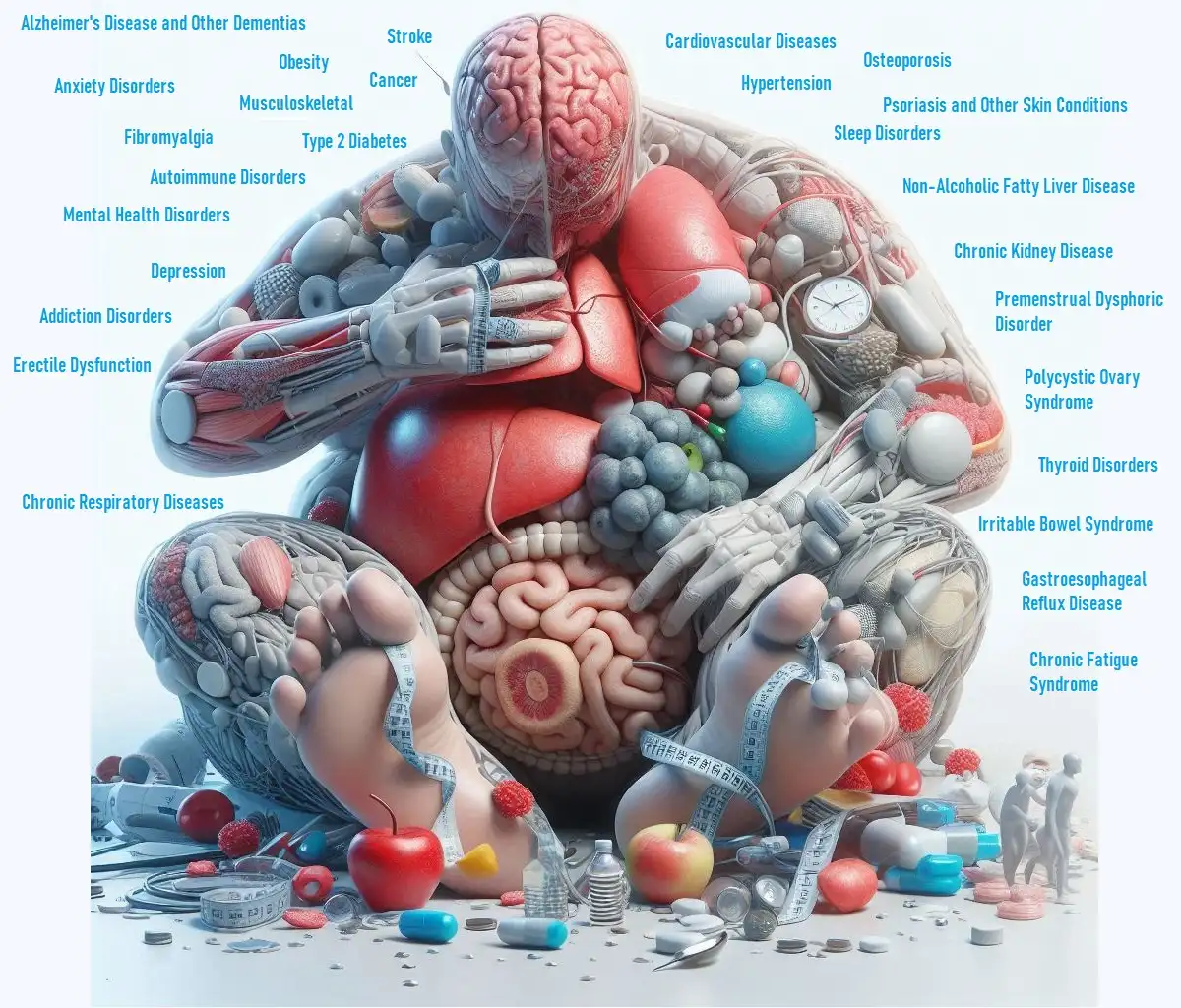
Obesity is more than just a weight issue—it’s a complex condition that impacts various aspects of health and well-being. From respiratory disorders to cancer risk and liver disease, the effects of obesity are wide-reaching. Additionally, environmental factors and technology play significant roles in shaping obesity trends. Understanding these connections can help you make informed decisions about managing your health. Here’s a deep dive into how obesity affects different areas of health and what you can do about it.
Key Takeaways
- Obesity can lead to serious respiratory disorders.
- Environmental factors play a significant role in the obesity epidemic.
- Obesity increases the risk of developing certain cancers.
- Non-alcoholic fatty liver disease (NAFLD) is a common consequence of obesity.
- Technology contributes to sedentary lifestyles and obesity.
Obesity and Respiratory Disorders
Obesity affects your respiratory system in several ways, making it harder to breathe and increasing the risk of serious respiratory conditions.
How Obesity Impacts Respiratory Health
- Sleep Apnea: Excess body weight can lead to obstructive sleep apnea, a condition where the airway becomes blocked during sleep, causing interruptions in breathing.
- Asthma: Obesity can worsen asthma symptoms and increase the frequency of asthma attacks.
- Reduced Lung Function: Extra weight can put pressure on your lungs and diaphragm, reducing lung capacity and making it more difficult to breathe.
For example, a study in the American Journal of Respiratory and Critical Care Medicine found that obese individuals are more likely to develop sleep apnea, which can significantly affect overall health and quality of life.
Environmental Factors Contributing to Obesity
Your surroundings and environment can greatly influence your weight. These factors often shape your eating habits and physical activity levels.
Key Environmental Influences on Obesity
- Access to Healthy Food: Areas with limited access to fresh fruits and vegetables, known as “food deserts,” can lead to poor dietary choices and higher obesity rates.
- Built Environment: Lack of safe places to exercise, like parks or gyms, can reduce physical activity and contribute to weight gain.
- Marketing and Advertising: High-calorie, low-nutrient foods are often heavily marketed, especially to children, influencing food choices and contributing to obesity.
A report by the Centers for Disease Control and Prevention (CDC) shows that communities with fewer grocery stores and parks often have higher rates of obesity due to reduced access to healthy food options and physical activity opportunities.
Obesity and Cancer Risk
Obesity is linked to an increased risk of several types of cancer. Excess body fat can influence cancer risk through hormonal changes and inflammation.
How Obesity Affects Cancer Risk
- Hormonal Changes: Obesity can lead to higher levels of certain hormones, like estrogen and insulin, which are associated with an increased risk of cancers such as breast and colon cancer.
- Inflammation: Chronic inflammation, common in obesity, can contribute to the development of cancer by damaging cells and tissues.
- Immune System Impact: Obesity can impair the immune system’s ability to detect and destroy cancer cells.
A study published in The Lancet Oncology found that obesity is a major risk factor for several cancers, including endometrial, colorectal, and kidney cancer, highlighting the importance of weight management in cancer prevention.
Obesity and Liver Disease: Non-Alcoholic Fatty Liver Disease (NAFLD)
One of the lesser-known consequences of obesity is its impact on the liver. Non-alcoholic fatty liver disease (NAFLD) is a common condition associated with obesity.
What You Need to Know About NAFLD
- Fat Accumulation: NAFLD occurs when fat builds up in the liver without excessive alcohol consumption. This condition can lead to liver inflammation and damage.
- Risk of Progression: NAFLD can progress to non-alcoholic steatohepatitis (NASH), which can cause severe liver damage and increase the risk of liver cirrhosis and liver cancer.
- Management: Losing weight, improving diet, and increasing physical activity can help manage and reduce the risk of NAFLD.
According to research published in Hepatology, up to 30% of individuals with obesity may have NAFLD, making it a significant concern for those struggling with weight issues.
Impact of Technology on Sedentary Lifestyles and Obesity
Modern technology has made our lives more convenient but has also contributed to sedentary lifestyles, which are a major factor in the obesity epidemic.
How Technology Contributes to Obesity
- Increased Screen Time: Spending long hours on computers, tablets, or smartphones reduces physical activity and contributes to weight gain.
- Convenient Food Delivery: Technology has made it easier to order high-calorie, unhealthy foods with just a few clicks, promoting poor eating habits.
- Sedentary Entertainment: Many forms of entertainment, like video games and streaming services, encourage prolonged sitting and reduce opportunities for physical activity.
A study in Health Affairs highlights that increased screen time and sedentary behavior are linked to higher obesity rates, emphasizing the need for balance and regular physical activity.
Conclusion
Obesity affects nearly every aspect of health, from respiratory disorders to cancer risk and liver disease. Environmental factors and modern technology further complicate the issue, contributing to sedentary lifestyles and poor dietary choices. By understanding these connections, you can take proactive steps to manage your weight and improve your overall health. Whether through lifestyle changes, addressing environmental influences, or leveraging technology for better health outcomes, recognizing the diverse impacts of obesity can help you make more informed decisions and lead a healthier life.








